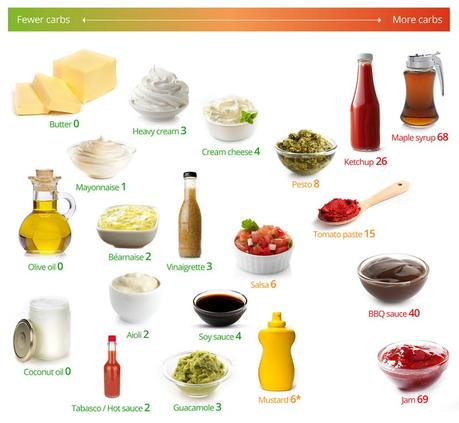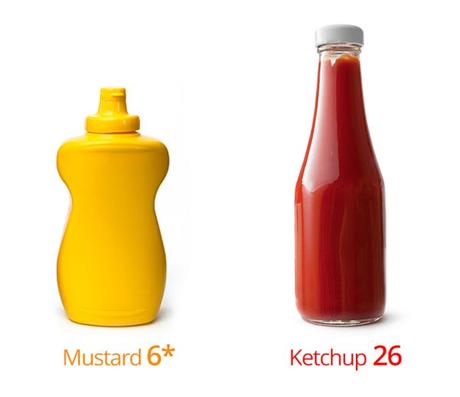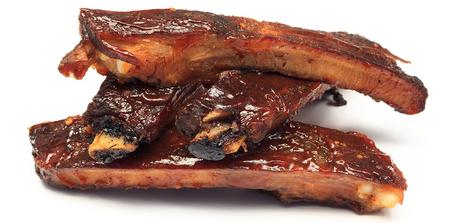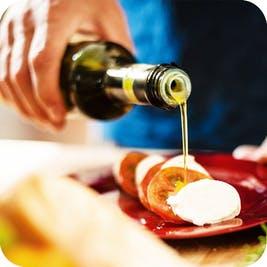Many foods taste better with a little something - a buttery sauce, a spicy dip, a flavourful relish, a savoury marinade. And a keto diet should be high enough in fat so that you feel satisfied after every meal.
What fats, oils, sauces and dips can you add to your food and stay keto? What's best for your health?
Good and bad choices abound. Here's a simple guide, with the lower-carb (i.e. keto) choices to the left:

The numbers are the average amount of net carbs per 100 grams (3.5 ounces). To the left, in the green zone, are choices with less than 5 grams of carbs. Choices in the red zone, to the right, have a lot more carbs and are to be avoided even in small amounts to stay in ketosis.
Beware: Read all labels. Increasingly, manufacturers sneak sugar into many products. Carb amounts can differ between brands. See all the 61 different names for sugar or sweeteners in products
 Condiment clash
Condiment clash

In a keto contest between mustard and ketchup, who wins? Mustard, hands down. Ketchup is full of sugar; mustard often has little or (occasionally) none.
But again, read labels carefully as some mustard brands do sneak in sweeteners. For example traditional Dijon mustard has zero carbs while some "honey" mustard brands may have 10 grams or more.
 Barbecue basics
Barbecue basics

Feasting on tasty baby back ribs or a seared steak fresh off a hot grill is one of the great pleasures for many on the keto diet. Beware, however, of store-bought barbecue sauces. They are invariably full of sugar. Eat in full knowledge of their carb hit, or try instead a savory, sugar-free rub or just season with salt, pepper, and powdered or minced garlic.
See our low-carb & keto BBQ guide
 Fat is fab!
Fat is fab!

Face it, most of us start out fat phobic after 40 years of being told, wrongly, to only eat low fat.
On keto, embrace the fat. Eat the butter. Drizzle on olive oil. Stir coconut oil into tea and coffee. It tastes great, it satisfies, it is good for you. How much to eat? If you are hungry between meals, eat a bit more fat. See our guide on how to eat more fat
A word about oils
What about vegetable, nut and seed oils? This is a bit more complicated. Natural oils that have been around for thousands of years are generally safe and embraced on a keto diet. Feel free to use pure olive oil, ghee, avocado oil, almond oil, peanut oil, sesame oil, fish oil - anything for which it is easy to extract the oil with simple pressing, grinding, churning or low heat separating.
Industrial seed or vegetable oils created within the past 60 years - such as corn oil, soy oil, safflower oil, sunflower oil, cottonseed oil - should be avoided or consumed with caution. That's because these oils are created by chemical extraction and high heat industrial processes, that can damage their (extremely high levels of) fragile omega-6 fats. Evidence is mounting that these oils may be inflammatory and even disrupt cell membrane structures.
Learn more here: Vegetable oils: What we know and what we don't
Get lots of weekly keto meal plans, complete with shopping lists and everything, with our premium meal planner tool (free trial).

